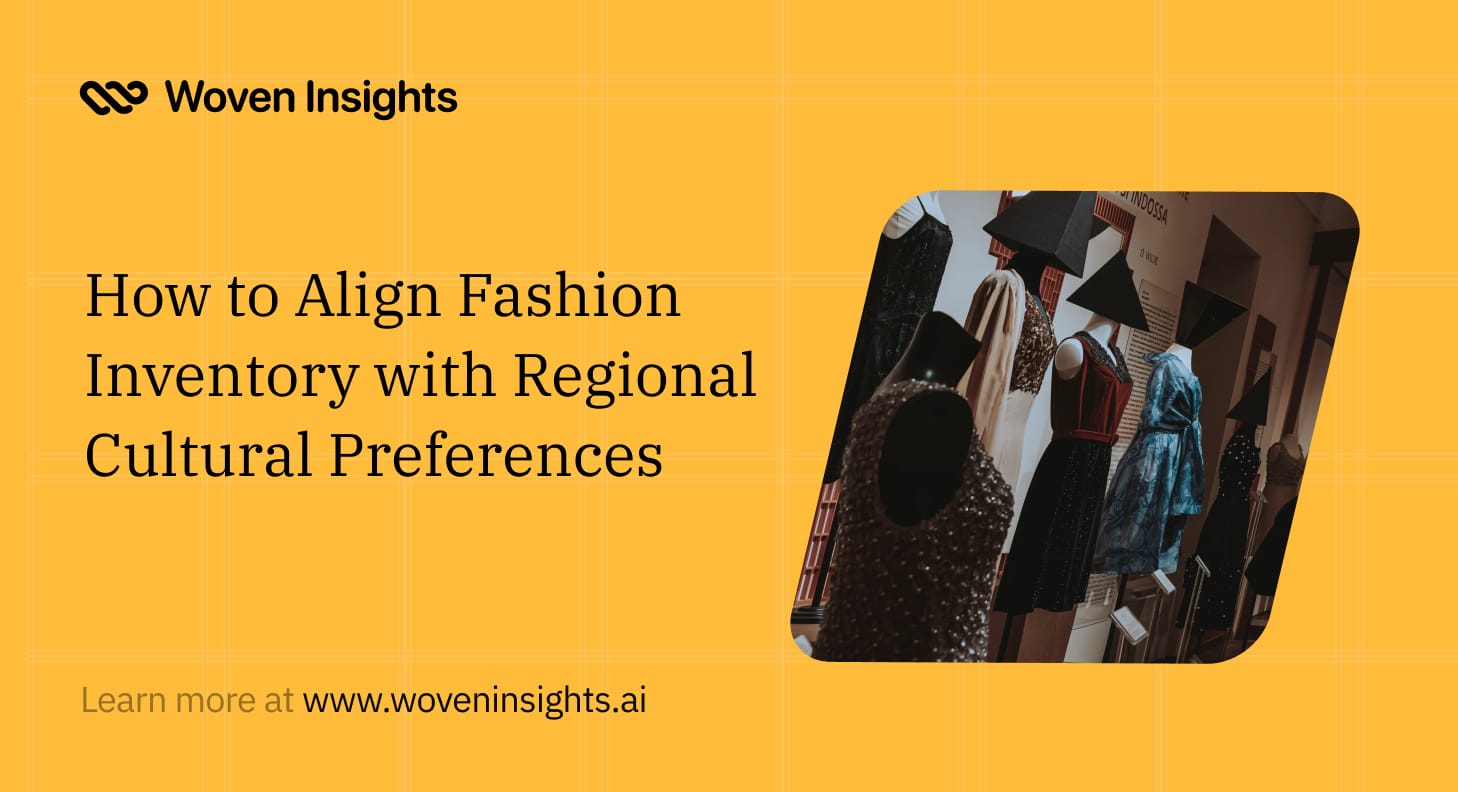How to Align Fashion Inventory with Regional Cultural Preferences

Ignoring regional cultural preferences in fashion inventory planning is more than a missed opportunity, it’s a strategic liability. Consider the brand that shipped sleeveless dresses to conservative Middle Eastern markets, only to face mass returns. Or the luxury label that used owl motifs (a symbol of misfortune in parts of Asia) in its Japanese collection, sparking backlash.
In today’s hyper-connected yet culturally distinct global market, inventory alignment with regional preferences is non-negotiable. With 68% of consumers abandoning brands that feel culturally tone-deaf, getting this right unlocks revenue, reduces waste, and builds loyalty.
The Strategic Blueprint for Cultural Inventory Alignment
1. Decode Cultural Nuances Through Hyper-Local Research
Cultural preferences extend far beyond aesthetics. They encompass:
- Symbolism and Taboos: In China, red signifies luck (ideal for holiday collections), while white denotes mourning. Meanwhile, animal motifs require careful vetting across Asian markets.
- Modesty Norms: Dubai consumers demand adaptable modestwear, think detachable linings in abayas or oversized cuts in contemporary styles blending tradition with modernity.
- Seasonal Behaviors: Winter in Scandinavia prioritizes functional warmth, while Middle Eastern "winter" (15°C) calls for lightweight layers. Australian summers peak in December, requiring flipped seasonal calendars .
2. Adapt Product Attributes for Regional Resonance
Inventory must transcend translation to transform for local contexts:
- Sizing Precision: Japanese consumers expect smaller, precise sizing (e.g., XXS), while U.S. markets require inclusive ranges. Zara’s Mexican rollout failed initially by using European sizing, triggering 40% return rates.
- Fabric and Fit: Southeast Asia’s humidity demands breathable linens; Nordic winters require thermal tech weaves. Brands like Uniqlo dominate by regionalizing fabric blends.
- Color Palettes: Pastels thrive in South Korea’s "soft aesthetics" movement, while Morocco favors bold jewel tones. A Missoni capsule for India integrated saffron and emerald greens, boosting sell-through by 35% .
3. Leverage Localized Partnerships and Distribution
Cultural credibility often requires collaboration:
- Retail Partnerships: In China, Tmall’s localized storefronts handle not just logistics but baijiu-themed Lunar New Year campaigns. Brands like Lacoste saw 50% higher conversions via Tmall versus standalone sites.
- Co-Creation: Dubai’s d3 district enables brands like Stella McCartney to collaborate with Emirati designers on region-exclusive modestwear capsules, tapping into cultural authenticity.
- Influencer Integration: Brazilian beauty brand Natura uses local micro-influencers to showcase product use in Rio’s Carnival versus São Paulo’s urban settings, driving region-specific demand.
4. Deploy Technology for Real-Time Cultural Agility
Static inventories fail in dynamic markets. Solutions include:
- AI-Driven Demand Sensing: Platforms like Centra analyze local social trends e.g., TikTok modesty challenges in Jakarta to adjust inventory allocations weekly.
- Dynamic Pricing Engines: Adjust prices based on regional buying power. Example: Adidas offers 15% lower prices in India versus Europe for identical sneakers, improving accessibility.
- 3D Design Prototyping: Test regional adaptations pre-production. Gucci’s "Digital Atelier" simulates how patterns resonate with Korean versus Italian audiences before cutting fabric.
5. Navigate Logistical and Regulatory Complexities
Cultural alignment means nothing if products don’t arrive compliantly:
- Tax and Duty Optimization: Use Merchant of Record (MoR) services to automate VAT variations (e.g., UAE’s 5% vs. Germany’s 19%) and avoid customs delays impacting 56% of cross-border shipments.
- Localized Packaging: Middle Eastern markets expect gold-accented luxury packaging; Scandinavian consumers prefer minimalist, recyclable materials. IKEA’s Saudi Arabia rollout included Arabic assembly instructions, reducing customer complaints by 30%.
- Ethical Guardrails: Ensure adaptations avoid cultural appropriation. Dubai’s d3 mandates co-creation with local artisans to ensure respectful integration of motifs.
Conclusion: From Cultural Intelligence to Competitive Advantage
Aligning inventory with cultural preferences isn’t about fragmentation, it’s about strategic localization. Brands that master this balance reap three rewards:
- Reduced Waste: H&M’s localized demand forecasting cut overproduction by 30%, directly lowering landfill contributions.
- Premium Pricing Power: Chanel’s Japan-exclusive tweed collection commanded 20% price premiums by honoring local craftsmanship traditions.
- Customer Lifetime Value: Dubai brands leveraging d3’s co-creation model saw 45% higher repeat purchase rates versus global imports.
The future belongs to agile brands that treat cultural preferences not as a checklist, but as a core inventory strategy. As one Dubai retail executive noted: "We don’t ship products we ship respect." By embedding cultural intelligence into inventory workflows, fashion transforms from a global monologue into millions of resonant local conversations.
About Woveninsights
Woveninsights is a comprehensive market analytics solution that provides fashion brands with real-time access to retail market and consumer insights, sourced from over 70 million real shoppers and 20 million analyzed fashion products. Our platform helps brands track market trends, assess competitor performance, and refine product strategies with precision.
Woveninsights provides you with all the actionable data you need to create fashion products that are truly market-ready and consumer-aligned.
Click on the Book a demo button below to get started today.

